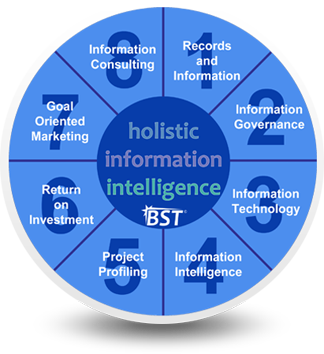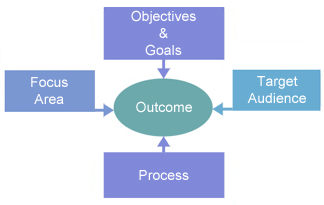
Goal Oriented Marketing (GOM) focuses on outcomes instead of processes in an information project. The key components of GOM are the focus area, objectives and goals, target audience, outcome and the process to get an organization to the final objective and goal. It is a type of strategy that affects how organizations can be successful in marketing any information endeavor.
On a strategic level, organizations sometimes attempt to use their mission and vision statements, and other core competencies for GOM wherever possible. Organizations can run into problems with a lack of GOM when they endeavor on something that requires buy-in.
BST's GOM model is focused on the outcome and end result, and not the process until the focus area, objectives & goals, and target audience have been identified. Strong GOM advocates a focus on the ends that the tasks are made for instead of the tasks themselves and how those ends will affect the organization. Strong GOM also accurately judges the effects of reaching the objectives & goals as well as the ability to fulfill that particular objective & goal with current resources and skills.
Click to enlarge
Focus Area
The Focus Area can be anything from the deployment of an efficiency application, the marketing of a conference, or the launch of a new product.
Objectives & Goals
The Objectives & Goals may be to get buy‐in from staff members on the benefits of an efficiency application, the return on investment for a conference, or high sales numbers for a new product.
Target Audience
In the case of an efficiency application, the Target Audience may be an organization's staff members. For a conference it may be the attendees themselves. And, for a new product it may be any demographic that an organization wants to target.
Outcome
The Outcome is the "measured or perceived successes" of the Objectives & Goals ‐ the bottom line in the GOM campaign. Process The Process is merely a means to an end and it is the most important component even though the focus should always be on the Outcome first and foremost.


